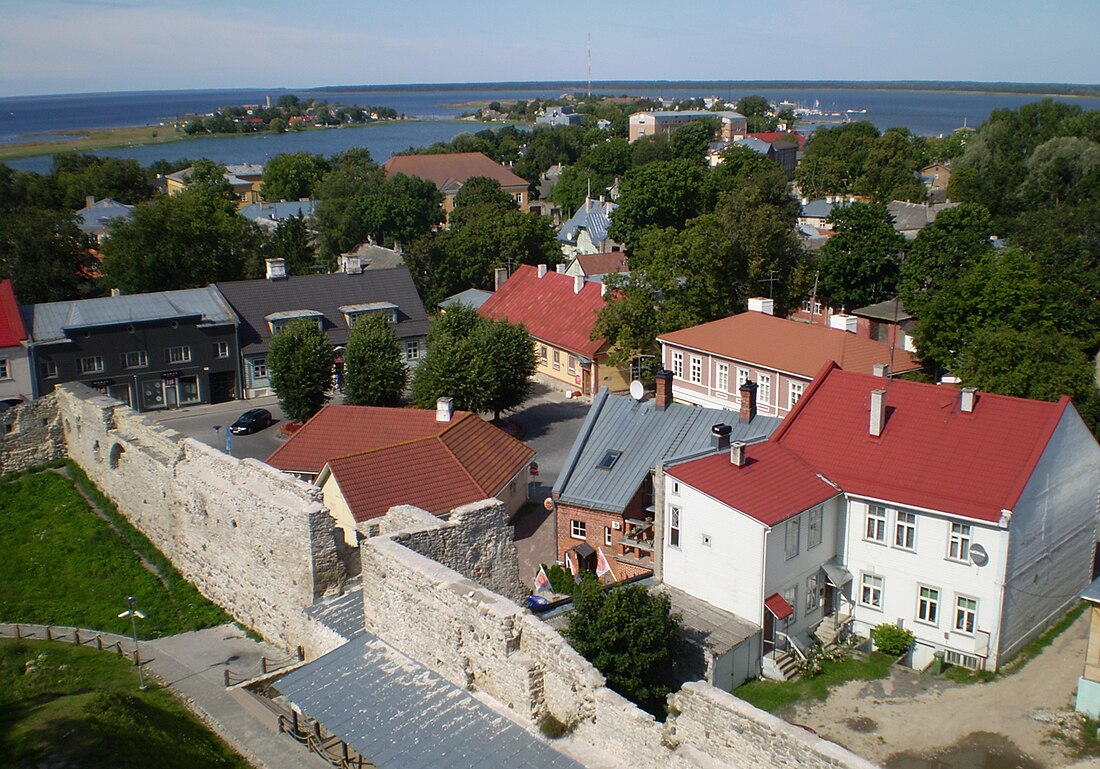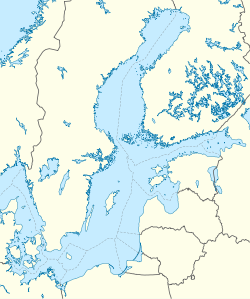Top Qs
Timeline
Chat
Perspective
Haapsalu
Town in Estonia From Wikipedia, the free encyclopedia
Remove ads
Haapsalu (Estonian pronunciation: [ˈhɑːpsɑlu]) is a seaside resort town located on the west coast of Estonia. It is the administrative centre of Lääne County, and on 1 January 2020 it had a population of 9,375.[1]
Remove ads
History
The name Haapsalu derives from the Estonian words haab 'aspen' and salu in the archaic sense '(forested) island' (now 'grove').[2] Until the first half of the 20th century, in Swedish and German the town was called Hapsal. Haapsalu and the surrounding area was the center for the Estonian Swedes from the 13th century until the evacuation of almost all ethnic Swedes from Estonia prior to the Soviet invasion of Estonia during World War II in 1944.[citation needed]
The first written record of Haapsalu dates back to 1279, when the town was chartered and became the capital of the Bishopric of Ösel-Wiek, which it remained for the following three centuries. Buildings from those early days remain today, including an episcopal castle, which has the largest single-nave church in Estonia.[citation needed]
Remove ads
Neighborhoods of Haapsalu
There are six neighborhoods of Haapsalu:
- Holmi
- Kesklinn
- Männiku
- Paralepa
- Randsalu
- Vanalinn.[3]
Healing by sea mud
The sea mud in Haapsalu is claimed to have a curative effect. A military doctor, Carl Abraham Hunnius, founded the first mud cure resort in 1825. News of the "curative mud" spread quickly amongst the wealthy customers in then capital city Saint Petersburg, and elsewhere in the former Russian Empire. The mud spas were frequented by the Russian imperial Romanov family.[4] For almost 200 years, Haapsalu has been a popular summer destination where people from all around the world come for medical treatment. At present, there are three "mud cure" establishments in Haapsalu.
Other attractions
The Land of Ilon Wikland (Wiklandia), a recreation centre for children, is set to open in a few years[when?] within the town. Wikland, a famous book illustrator, has had a strong bond with Haapsalu since her childhood.
The August Blues Festival is held every year in August in Haapsalu.
Since 2005, the town hosts Haapsalu Horror and Fantasy Film Festival, an annual film festival dedicated to genre films.[5] In 2017, the pastors of Haapsalu made an open statement calling to end the city's financing of the festival, claiming the horror and violence depicted in the screened films were not fit to represent the resort town image.[6] The same year the festival was held to a record-breaking attendance.[7]
Remove ads
Demographics
Remove ads
In popular culture
Pyotr Ilyich Tchaikovsky in 1867 wrote a suite of three pieces for piano during his stay in Haapsalu, titled Souvenir de Hapsal.
In the 19th century, the town became famous for its "Haapsalu shawls", a delicate craft made by local women.
Haapsalu has sometimes been called the "Venice of the Baltics" — an apparent exaggeration used mostly to promote the resort town to foreign tourists.[17]
Haapsalu is site of a fencing school founded by Estonian fencer Endel Nelis, used as the setting of the Finnish-Estonian film The Fencer.[18]
Remove ads
Gallery
- Haapsalu castle
- Central square
- Town centre
- Haapsalu kuursaal (resort hall)
- Bay of Haapsalu Tagalaht
- Former train station, notable for the length of its platform canopy.
- Town Hall
- Train station
- Orthodox Church of St. Mary Magdalene
- A pavilion by the seaside promenade
- View from the promenade
- Jaani Lutheran church
See also
References
External links
Wikiwand - on
Seamless Wikipedia browsing. On steroids.
Remove ads














